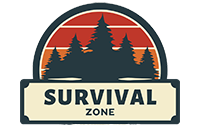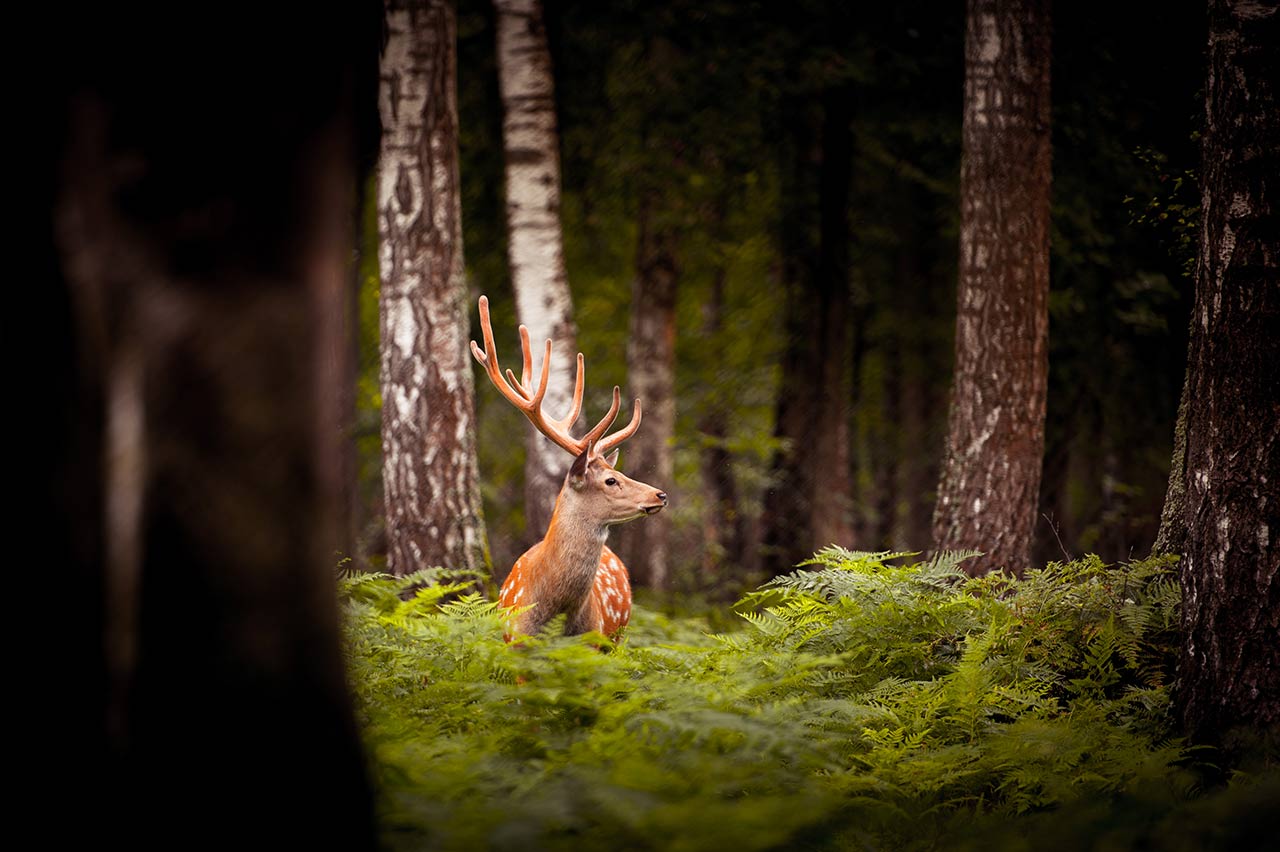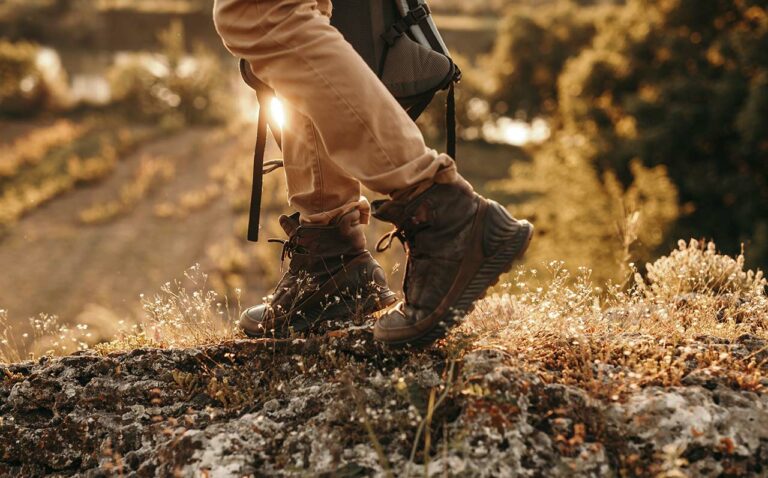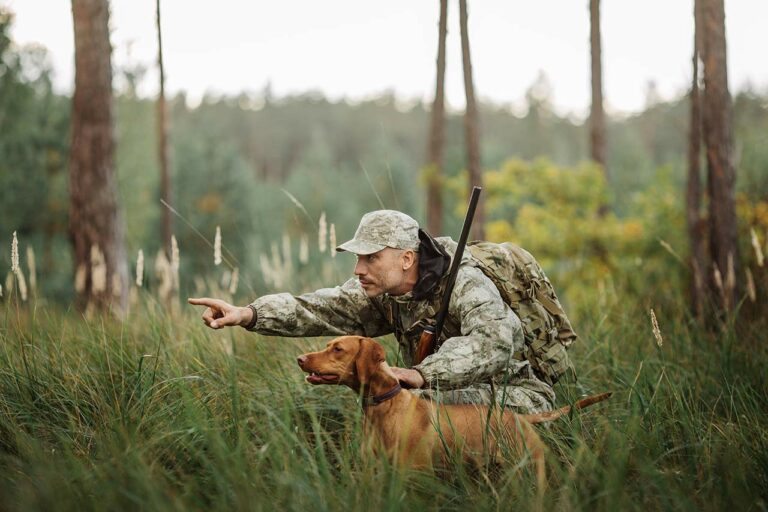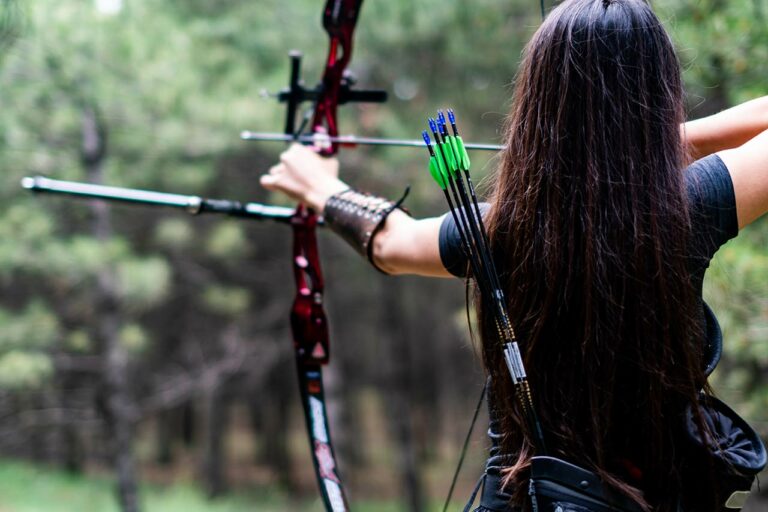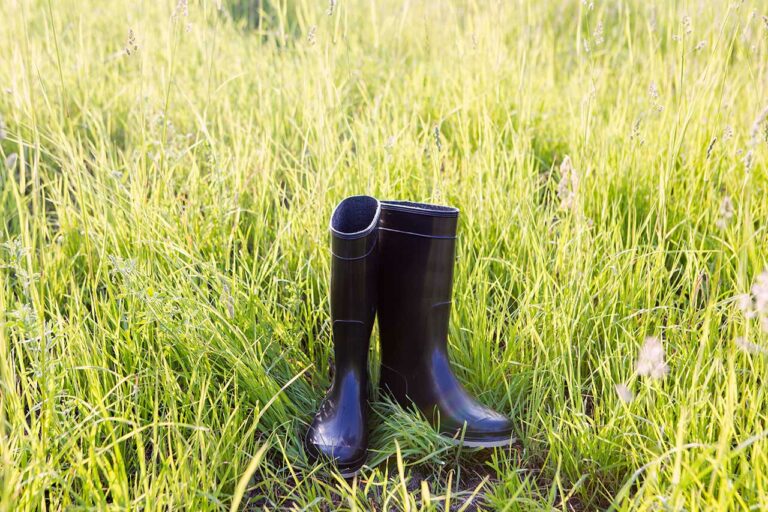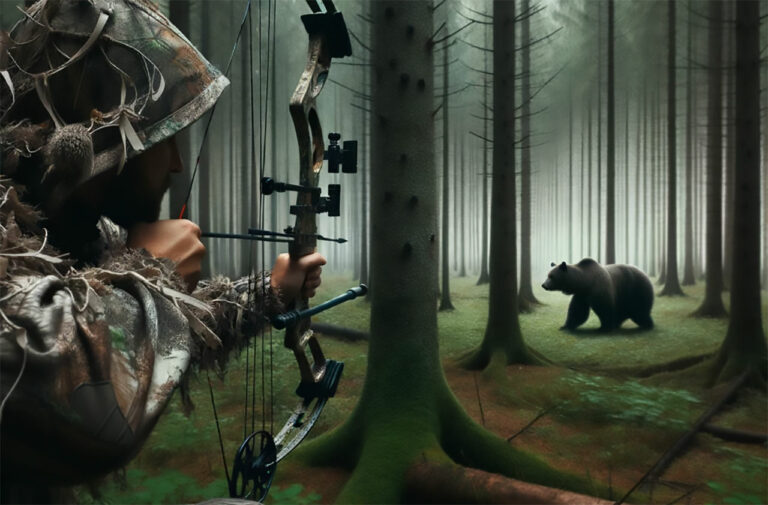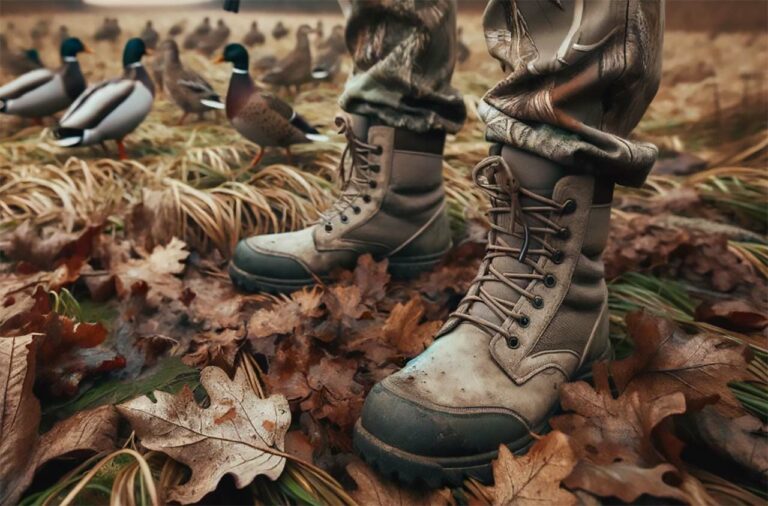Deer Hunting Tips For Beginners
Deer hunting is more than just a sport, it’s a crucial skill for survivalists looking to supplement their food sources in a self-reliant manner.
As a beginner, it might feel overwhelming to penetrate the intricate world of tracking, stalking, and securing this valuable game. But understanding deer behavior and honing hunting techniques can significantly increase your chances of success in both hunting and survival situations.
Equipped with the knowledge of seasoned hunters and fellow survivalist, you’ll be prepared not just to hunt but to sustain and thrive in a potentially challenging world.
Understanding Deer Behavior
When you’re just starting out as a deer hunter, it’s essential to understand deer behavior. Knowing how these animals move and interact with their environment can help you predict their actions, making it easier to locate and hunt them successfully. Deer behavior is influenced by various factors, such as food availability, weather conditions, and the rut.
The Rut
The rut is the deer mating season, during which bucks become more active in search of does. This is an ideal time for hunting, as bucks are less cautious and more likely to be out in the open. Familiarize yourself with the local rut phases and dates so you can plan your hunting trips to coincide with these.
Bedding Areas
When scouting for deer hunting spots, keep an eye out for bedding areas, where deer rest and sleep during the day. These are often found in thick cover or on slopes near food and water sources. By identifying deer bedding locations, you can set up near their resting spots, increasing your chances of spotting them as they leave or return.
Deer Trails
Deer typically follow established paths called deer trails between their bedding, feeding, and watering areas. These trails can give you insight into their daily routines. Pay attention to where these trails are and how they connect to each other for better success when hunting.
Deer Feeding
Deer feeding habits can also provide valuable information about where and when to hunt. Deer are generally the most active during dawn and dusk when they forage for food. Be aware of the types of vegetation deer prefer, such as white oak acorns and clover, and locate these plants for a better chance of finding deer.
Scrapes
Scrapes are where bucks scrape away vegetation and dirt with their antlers to mark their territory and attract does. These can provide a good indication of active buck presence and can sometimes be effective locations for stand placement.
Hunting Equipment
Firearms
When it comes to firearms for deer hunting, you have several options. Rifles are a popular choice, but using the right caliber is essential. Common deer-hunting rifle calibers include:
- .243
- .270
- .308
- 30-06
Once you’ve selected your firearm, familiarize yourself with your rifle and practice your shooting accuracy.
Muzzleloaders
Muzzleloaders are another option that provides a challenge and can extend your deer hunting season with special muzzleloader-only seasons in some areas.
No matter which firearm you choose, make sure to take a hunter safety course and follow all hunting regulations.
Bow Hunting
If you prefer a more traditional and challenging approach to hunting deer, bow hunting is an excellent option. You’ll mainly encounter two types of bows: compound bows and crossbows.
Compound Bows
Compound bows require more practice and skill but are very rewarding once mastered.
Crossbows
Crossbows offer an easier learning curve for beginners, combining elements of both a rifle and traditional bow hunting.
Regardless of which bow you choose, ensuring accuracy and familiarity with your weapon is key.
Essential Gear
When heading out on your first deer hunt, you’ll want just enough gear to improve your chances. Here’s a list of essential gear items you should have for a (hopefully) successful first hunt:
- Proper Clothing: Dress in layers, with moisture-wicking materials, insulated clothing, and a waterproof outer layer. Don’t forget your blaze orange vest or hat to meet safety regulations.
- Boots: Invest in quality waterproof, insulated hunting boots to keep your feet warm, dry, and comfortable.
- Binoculars: Hunting binoculars are crucial for spotting deer from a distance, so it’s worth investing in a good pair.
- Tent: If you plan on camping during your hunting trip, bring a reliable, weather-resistant tent.
- Ammo: Make sure you have enough and the correct type of ammunition or arrows for your chosen weapon.
- Optics: Attach a reliable scope to your rifle or attachable sights to your bow to increase your accuracy.
- Other essentials: Consider a hunting pack for storage, a knife, a flashlight, a first-aid kit, a compass or GPS, and scent eliminators or attractants to increase safety and concealment.
Selecting a Hunting Area
Choosing the right hunting area is essential for a successful deer hunt, and this is especially as a beginner. Start by researching public and private lands in your region that allow hunting. Consider joining hunting clubs or lease programs which might offer exclusive access to prime hunting grounds.
When scouting potential hunting areas, keep an eye out for deer tracks and consider the overall habitat. Look for a combination of wilderness areas with access to food sources, such as agricultural fields, and mast-producing trees. Water sources also play a crucial role, as deer tend to gather around these spots, making them ideal for hunting.
Blinds and Tree Stands
When choosing a hunting spot, don’t forget to look for a proper location for your blind or tree stand. Prioritizing line of sight and ensuring a clear shooting line will increase your chances of bagging a deer.
Tree stands offer better visibility and help to minimize your scent, but ground blinds can be deployed if you prefer to remain close to the ground.
Remember, it’s essential to position your blind or tree stand in a way that takes advantage of the natural terrain and vegetation. This will help conceal your presence, improving your chances for a successful hunt.
Hunting Pressure
While selecting a hunting area, make sure you consider the pressure on deer populations from other hunters. Public land tends to experience higher hunting pressure, which can make deer more cautious and harder to find.
Private land and hunting clubs provide more relaxed environments, where deer are less wary of human presence.
Ensuring you have access to multiple hunting areas within different properties will give you a better chance to adapt to changing conditions and deer movements.
Preparation Before the Hunt
Before you embark on your first deer hunt, you should do some preparation. This will not only increase your chances of a successful hunt, but will ensure you comply with laws and regulations.
Local Regulations
The first step in any hunting is checking local hunting laws and regulations, and obtain a hunting license if required. Each region may have different hunting seasons and specific rules on equipment, so make sure you know these rules before going out.
Scouting
Scouting the area where you plan to hunt is crucial. You’ll want to identify deer trails, bedding areas, and feeding zones. Trail cameras and deer feeders can be beneficial tools during this process. Set up game cameras in the area to monitor deer activity and patterns. Deer scents might also be useful in attracting deer to your hunting spot.
Deer Behavior
During your preparation phase, learn as much as you can about the local deer population, their behavior, and preferred food sources. Understanding their movements, feeding times, and bedding areas will help you to determine the best locations to set up your stands or blinds. If possible, start scouting the area well before the hunting season to have a better understanding of the terrain.
Gather Your Gear
Create a checklist to ensure you have all the necessary gear for your hunt. This includes your weapon, ammunition, clothing, first aid kit, and any additional equipment such as binoculars, scent eliminators, and navigation tools. Don’t forget to pack enough food and water to sustain you during the hunt.
Weather
While no one wants weather to disrupt their hunting plans, adverse weather conditions might affect deer movement and your hunting strategy. So, keep up to date on weather and prepare for various weather scenarios to ensure your hunt is safe and enjoyable.
During The Hunt
Detecting Deer
Patience is key when hunting deer. You’ll want to get into your stand well before daylight to allow time for the woods to settle down. Being in position early helps you stay concealed and ready for deer movement at first light. Make sure you’re comfortable and quiet in your stand, as minimizing your movement is essential.
Use your stealth skills and always be aware of wind direction. Deer have an excellent sense of smell, and can detect your scent if the wind is blowing it their direction. Position yourself downwind of their expected movement paths to avoid being detected.
During the early season, focus on food sources like agricultural fields, fruit trees, or food plots. Deer usually feed during the early morning and late evening hours. During the late season, look for bedding areas and travel routes between food sources and bedding grounds. Utilize your deer call during the rut phase to bring deer closer.
Shot Placement
Once you’ve spotted a deer, it’s essential to stay calm and patient. Assess the situation before you take a shot. Be sure of your target, the position, and distance of the deer, as well as any potential obstacles that could affect your shot.
Choose your shot placement carefully for a quick and ethical kill. Aim for the heart and lungs, or the “vitals” area, which is located just behind the front leg, about one-third of the way up the body. Keep these shots in mind when shooting:
- If the deer is broadside, aim just behind the front shoulder for a double-lung shot.
- If the deer is quartering away, aim slightly farther back to ensure the arrow or bullet passes through the vitals.
- If the deer is quartering toward you, wait for a better shot to avoid hitting bones and non-vital areas.
Following The Hunt
When preparing for your first deer hunt, learning what to do after you’ve taken down a deer is as every bit as essential as learning how to scout and to shoot.
Make sure you know the essential deer preservation skill of field dressing before heading out on your first hunt:
Field Dressing
Field dressing plays a crucial role in preserving the quality of your deer meat. Field dressing involves removing the internal organs of the animal to help speed up the cooling process and prevent spoilage. Here are the essential steps:
- Find a suitable location. Choose a flat, open area that allows you to work comfortably and efficiently.
- Use proper tools. A sharp, reliable knife is essential for field dressing. Ensure your equipment is clean and ready to use.
- Wear rubber gloves. Wearing gloves not only helps maintain hygiene, but reduces the transfer of human odor to the deer.
- Make initial cuts. Carefully make an incision from the pelvic area up to the chest cavity, taking care not to puncture the stomach or intestines.
- Remove internal organs. Carefully remove the organs, starting with the lower digestive system and working your way up to the heart and lungs. Properly disposing of the organs is vital to prevent the spread of disease and contamination.
Frequently Asked Questions
Which rifle should a beginner deer hunter use?
When choosing a rifle for deer hunting, the key factors for beginners are affordability, reliability, and ease of use. A popular choice for novice hunters is a bolt-action rifle chambered in .308 Winchester or .30-06 Springfield as these calibers offer good accuracy, manageable recoil, and effective stopping power on deer. It’s important to practice shooting your chosen rifle and become proficient with it before going out to the field.
What are effective deer scouting techniques for beginners?
Beginner deer hunters can use several effective scouting techniques to improve their chances of success. It’s essential to research the area where you’ll be hunting, and study deer habits and habitat. Look for areas with plenty of food sources, water, and cover, as these are typically hotspots for deer activity.
Utilize trail cameras to monitor deer movements, and pay attention to the time of day when deer are most active. It’s also a good idea to scout the area on foot, looking for signs like tracks, droppings, and bedding areas. Mapping out these findings can help you identify promising hunting spots and plan your approach.
What tactics should be used when hunting deer from the ground?
Hunting deer from the ground requires a combination of stealth, patience, and a keen understanding of deer behavior. To start, choose a location that offers suitable cover and an unobstructed view of known deer trails or feeding areas. Stay as silent as possible, using natural vegetation to mask your movement and scent.
Pay attention to wind direction – you want to ensure that your scent is blowing away from the area where the deer are likely to approach. Make sure you’re wearing appropriate camouflage, and minimize your movement to avoid spooking the deer.
When a deer appears, try to wait until it’s within a comfortable shooting range, and ensure you have a clear shot before taking it. Keep in mind that deer are often aware of their surroundings, and any sudden movements or sounds can alert them, so patience and self-discipline are vital skills for the deer hunter.
